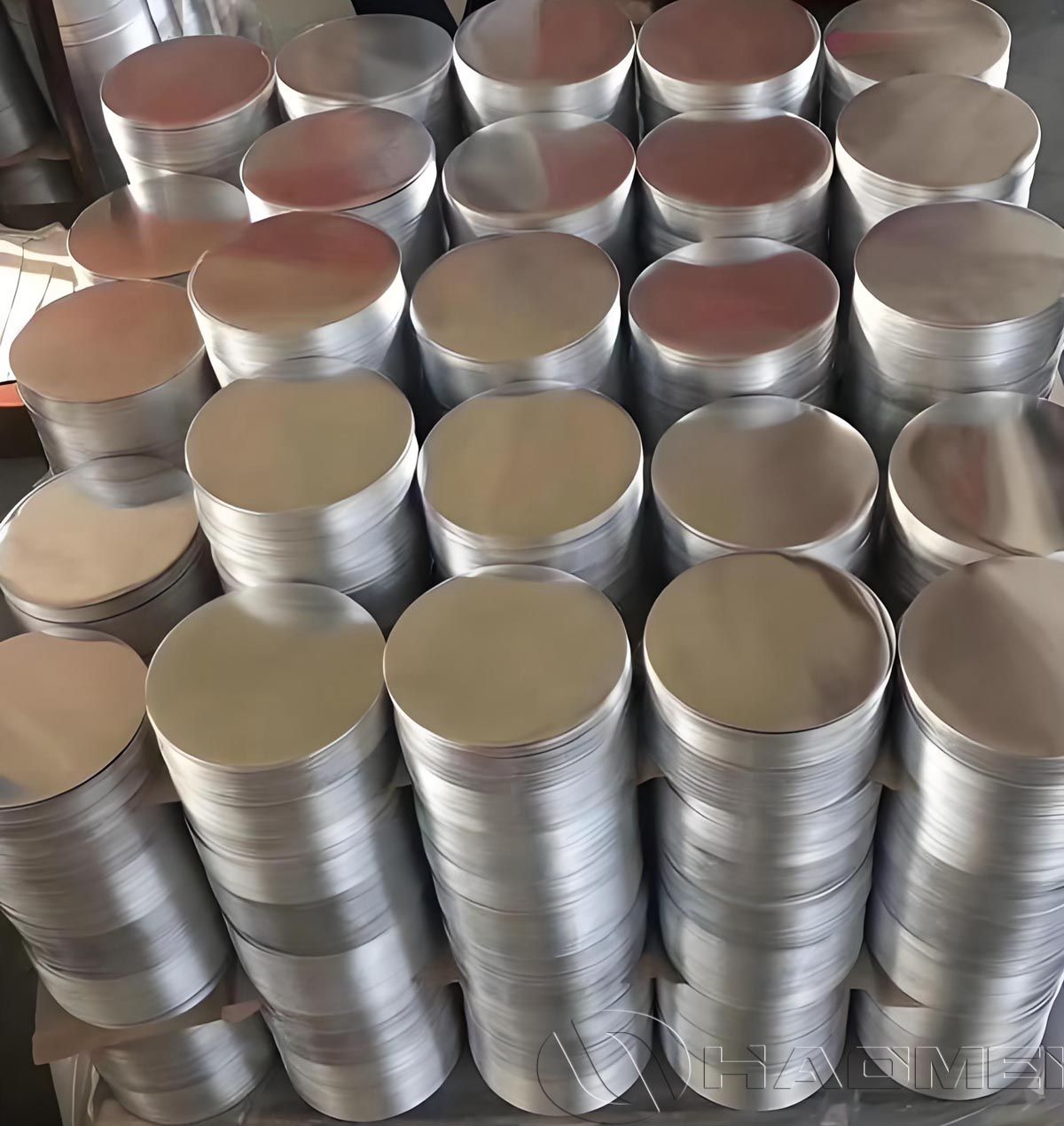
 No.14 Waihuan Road, CBD, Zhengzhou, China
No.14 Waihuan Road, CBD, Zhengzhou, China
 +86-18703635966
+86-18703635966

 No.14 Waihuan Road, CBD, Zhengzhou, China
No.14 Waihuan Road, CBD, Zhengzhou, China
 +86-18703635966
+86-18703635966
A pressure cooker is an essential tool for efficient cooking in modern kitchens. It uses high-pressure steam to raise the boiling point of water, allowing food to cook faster. In the manufacturing of pressure cookers, the bottom material is especially important-it not only affects heat conduction efficiency but also determines the product’s durability and safety.
Among the commonly used materials, 3003 aluminum circles are one of the preferred options for pressure cooker bases. As an aluminum-manganese alloy, 3003 offers superior anti-rust properties, excellent formability, and high thermal conductivity.
Common Tempers
O temper (annealed): Best for deep drawing the pressure cooker base; the most widely used temper.
H14/H16: Suitable for parts that do not require deep drawing.

1. Moderate Strength
Compared with pure aluminum (1000 series), 3003 alloy contains added manganese, which increases its strength by about 20%. This provides better mechanical performance, allowing it to withstand the high internal pressure during pressure cooker operation.
2. Excellent Corrosion Resistance
Aluminum naturally has strong corrosion resistance and can withstand moisture and acidic substances commonly found in daily cooking.
3. Excellent deep-drawing performance
3003 Aluminum discs can be easily processed by stamping, stretching, and deep drawing, especially when using materials in the O temper (fully annealed) or lower hardness states such as H12 and H14, which have low anisotropy and high elongation. This ensures that cracking or wrinkling is not easy during deep drawing, and can be easily formed into complex bottom structures.
4. High Thermal Conductivity
Aluminum has high thermal conductivity (160-180 W/m·K). 3003 maintains good heat conduction while offering better corrosion resistance. This ensures rapid heating and uniform heat distribution across the cookware base.
5. Reasonable Cost and High Cost-Performance Ratio
Compared with high-strength alloys such as 5052 or 6061, 3003 is more economical.
Compared with pure aluminum (1060/1070), it provides much better mechanical performance.
| Alloy | 3003 |
| Temper | O, H14, H16 |
| Thickness | 0.5-6.0 mm |
| Diameter | 10-1200 mm |
| Surface Quality | Smooth, scratch-free, oil-free |
| Surface Treatment | Anodized, polished, brushed, coated, etc. |
Production Process | CC/DC |
| Sample | Available |
| Applications | Non-stick pans, frying pans, lamp reflectors, traffic signs, etc. |
| MOQ | 1-3 tons |
Mechanical Properties
| Tensile Strength | 95-130 MPa |
| Yield Strength | 35-50 MPa |
| Elongation | 25-35% |
| Hardness | 28-40 HB |
| Thermal Conductivity | 160 W/m·K |
| Alloy | Diameter | Thickness | Application |
| 3003 | 220, 240, 260, 280, 300 mm | 1.0–1.2 mm | Lightweight pressure cooker bases |
| 1.5–2.0 mm | Standard home-use pressure cookers | ||
| 2.5–4.0 mm | Premium thick-bottom cookers, electric pressure cooker bases |
1. Melting & Casting
Aluminum ingots are melted with manganese to produce 3003 alloy, then cast into thick slabs.
2. Cold Rolling
The slabs undergo multiple rolling passes to achieve the required thickness with uniform structure and smooth surface.
3. Slitting & Punching
Aluminum coils are slit into narrow strips and then punched using high-tonnage precision presses to form circles with accurate diameters and smooth edges.
4. Heat Treatment (Annealing)
Stamping causes work hardening, making the discs hard and brittle. Annealing restores the material to a soft O temper, suitable for deep drawing and bonding.
5. Surface Treatment
Cleaning and removing oil or oxides prepare the material for the next processing steps.
6. Cladding / Composite Bonding
The 3003 aluminum circle is bonded with stainless steel layers (food-contact layer and exterior layer) to form a durable "sandwich" structure used in pressure cooker bases.

Consumers often ask:
"Is cookware made from 3003 aluminum toxic? Will it release aluminum? Is it safe for long-term use?"
The answer is definitively yes - aluminum cookware is safe when used properly.
3003 aluminum consists mainly of aluminum with about 1.2% manganese-both low-toxicity, non-essential elements safe for cookware applications.
In pressure cookers, 3003 aluminum is used as the middle layer of the composite base, completely encapsulated by stainless steel, and does not contact food.
Even when exposed to air, aluminum forms a stable oxide layer (aluminum oxide), which protects the metal from corrosion and prevents aluminum leaching.
Copyright © 2025 By HAOMEI Aluminum CO., LTD. All Rights Reserved. Sitemap